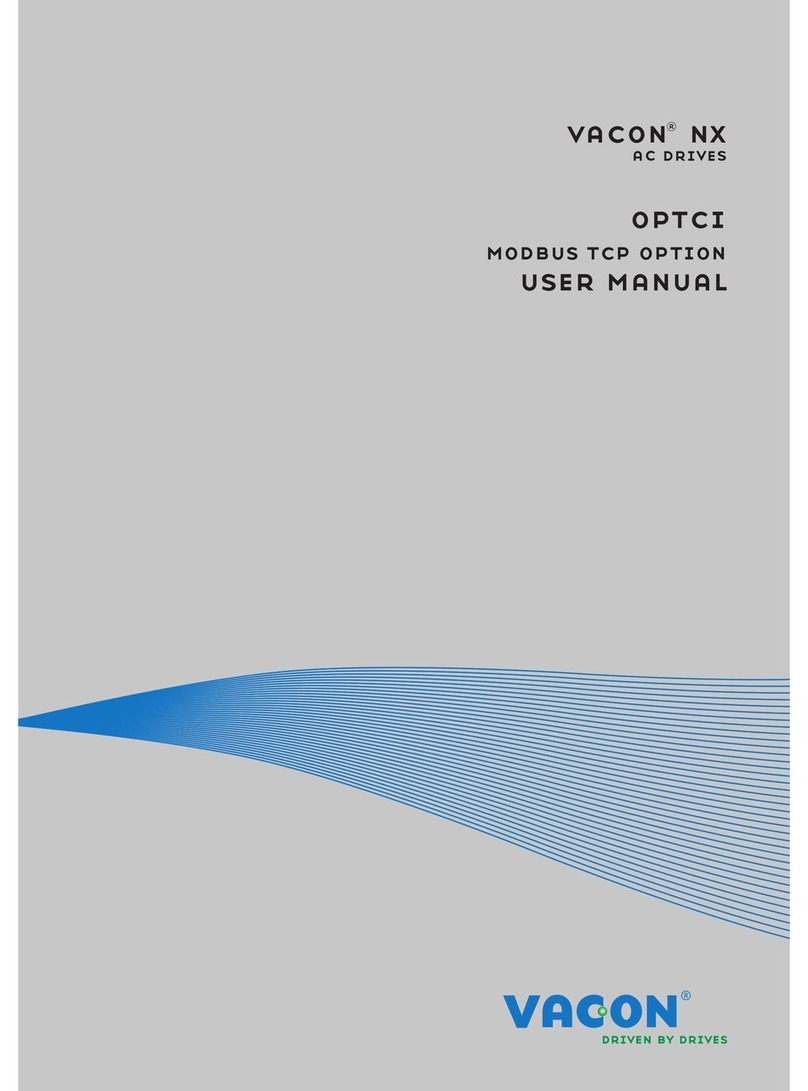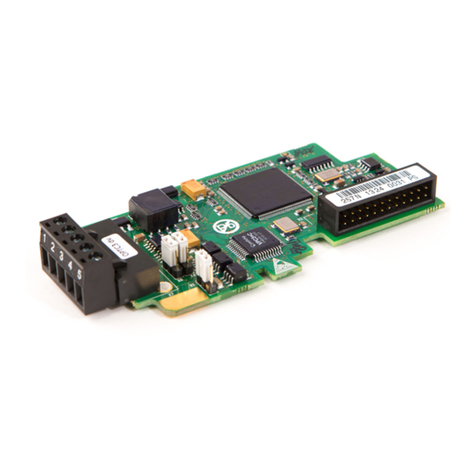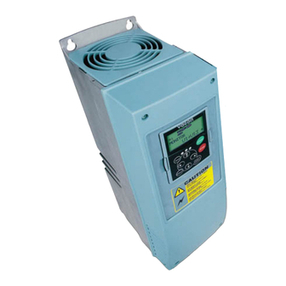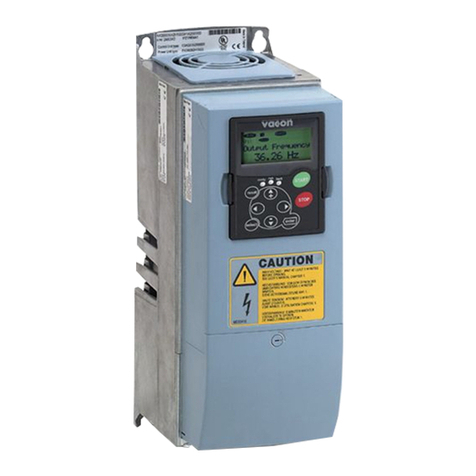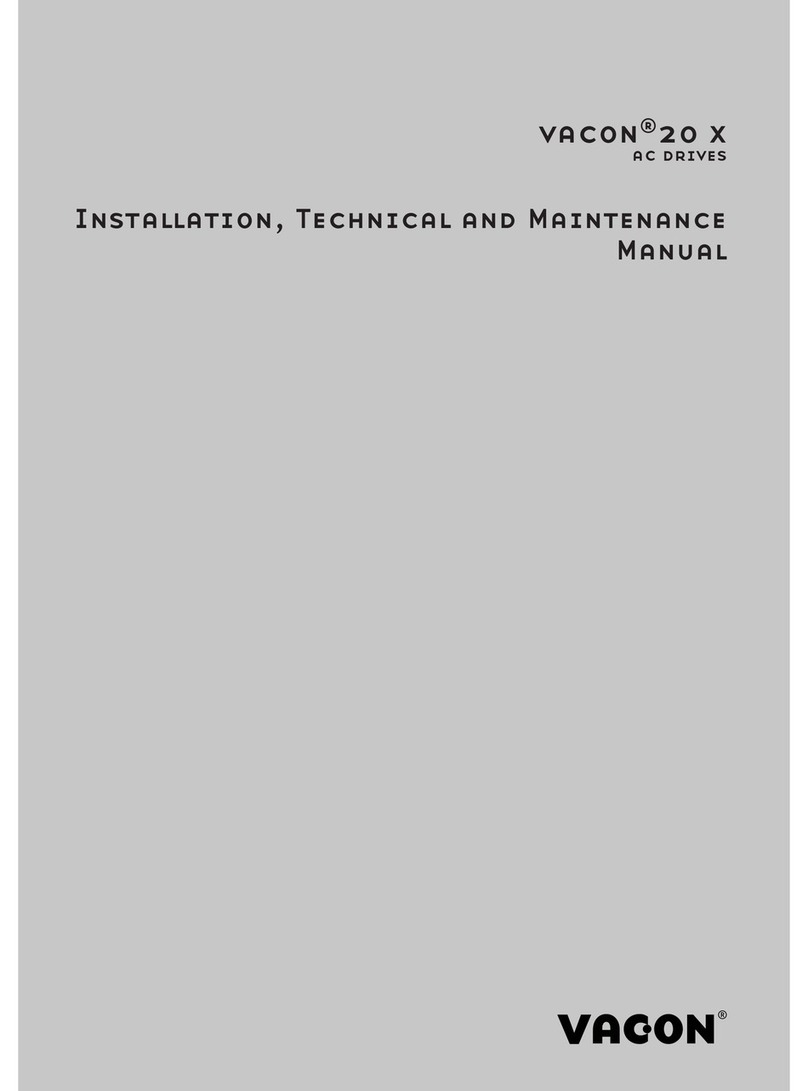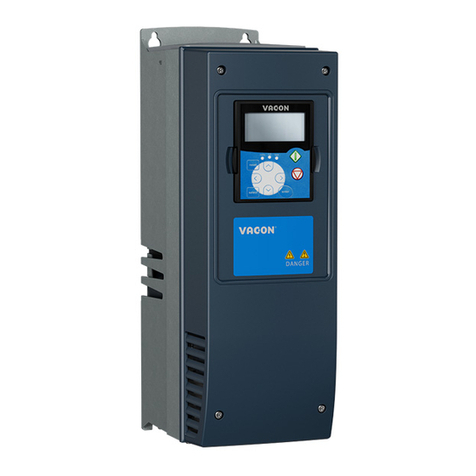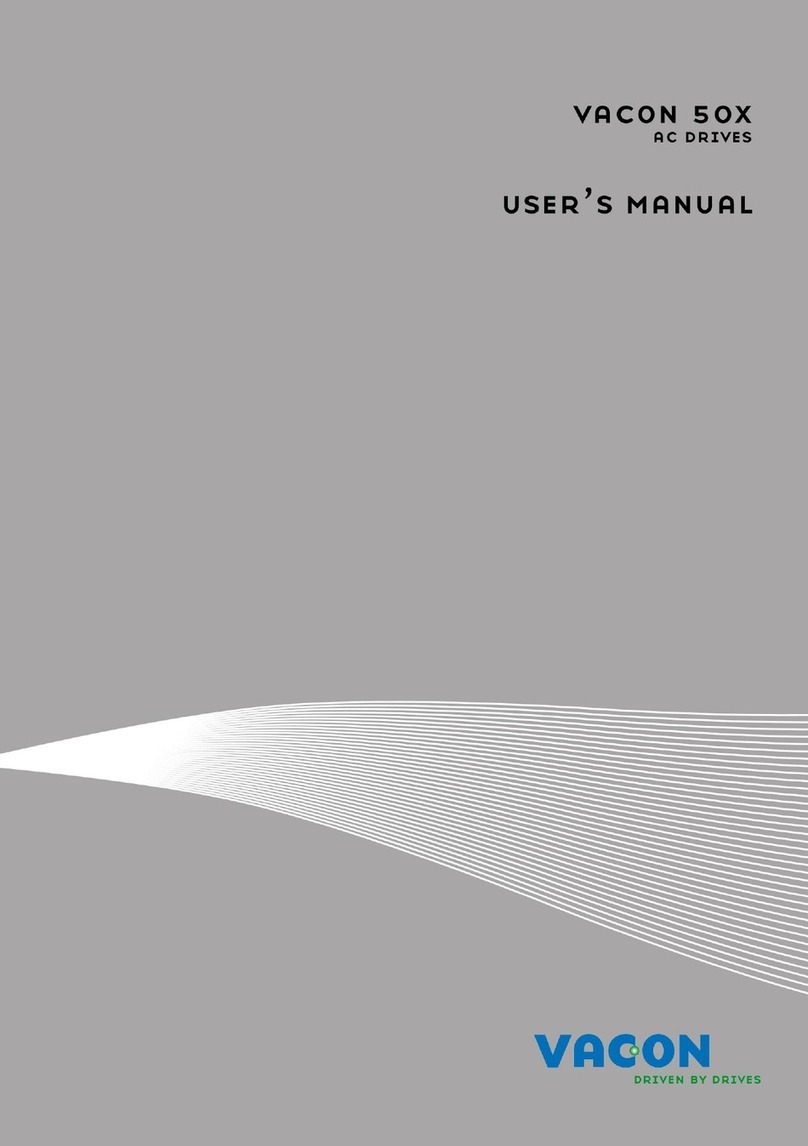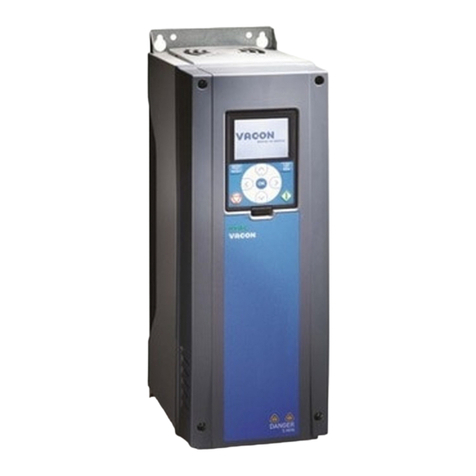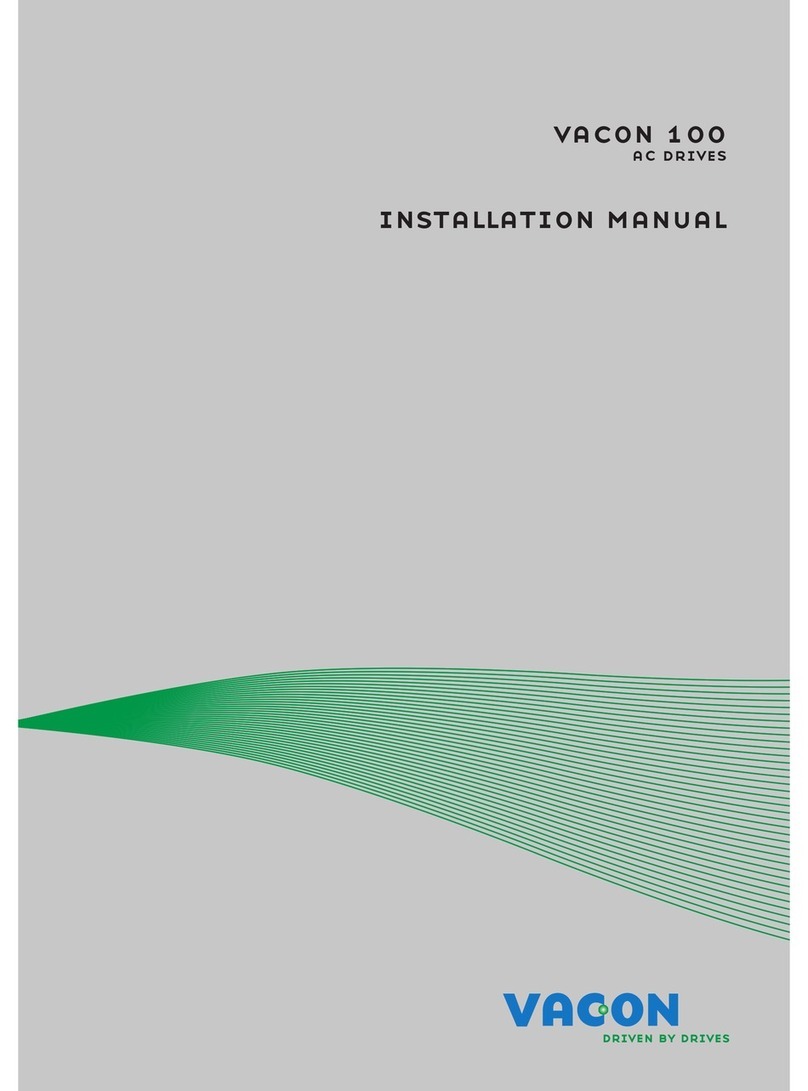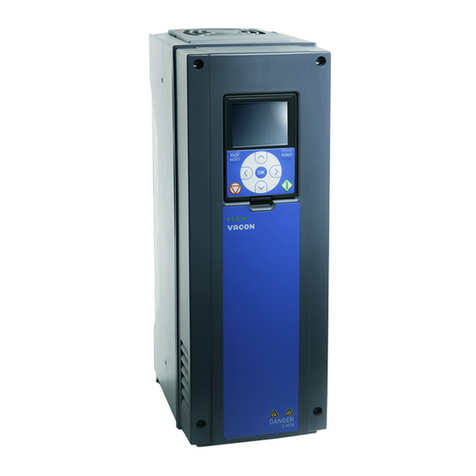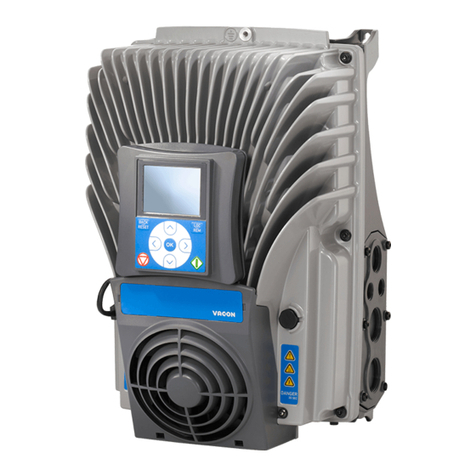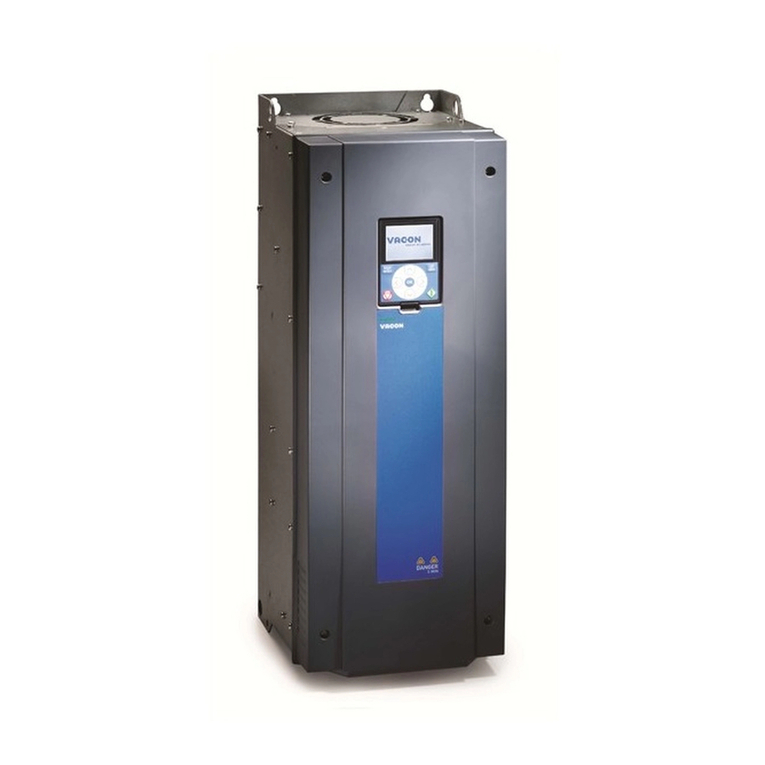
vacon • 4
Local contacts: https://www.danfoss.com/en/contact-us/contacts-list/
6.1.8 EIP Input and Output instance .........................................................................................64
6.1.9 EIP Product code offset ...................................................................................................64
6.1.10 Mode.................................................................................................................................64
6.1.11 MAC Address....................................................................................................................65
6.1.12 Modbus Unit Identifier .....................................................................................................65
6.1.13 Media Redundancy ...........................................................................................................66
6.1.14 SNTP settings...................................................................................................................66
6.1.15 SNTP monitoring values ..................................................................................................68
6.1.16 System Redundancy.........................................................................................................68
6.2 Internal communication modes.......................................................................................68
6.3 Safety parameters............................................................................................................69
6.4 Control and status word monitoring values ....................................................................69
6.5 OPTCx emulation mode ...................................................................................................69
6.5.1 Modbus in emulation mode .............................................................................................70
6.5.2 EtherNet/IP in emulation mode.......................................................................................70
6.5.3 PROFINET in emulation mode .........................................................................................71
7. Modbus TCP / Modbus UDP ............................................................................72
7.1 Modbus UDP vs TCP.........................................................................................................73
7.2 Modbus communications.................................................................................................75
7.3 Data addresses in Modbus messages .............................................................................76
7.3.1 Modbus memory map ......................................................................................................76
7.3.2 Modbus data mapping......................................................................................................76
7.4 Modbus communication and connection timeout ...........................................................88
7.5 Quick setup.......................................................................................................................89
7.6 Modbus - example messages ..........................................................................................90
7.6.1 Example 1 - Write process data.......................................................................................90
7.6.2 Example 2 - Read process data .......................................................................................91
7.6.3 Example 3 - Exception response .....................................................................................92
8. PROFINET IO ..................................................................................................93
8.1 PROFIdrive 4.1 profile ......................................................................................................93
8.2 PROFIdrive 4.1 state machine..........................................................................................94
8.3 PROFINET IO process communication ............................................................................95
8.3.1 Choosing telegram type ...................................................................................................95
8.3.2 Telegram types ................................................................................................................96
8.3.3 Telegram building blocks ..............................................................................................104
8.3.4 Quick setup.....................................................................................................................108
8.4 PROFIdrive IO parameters.............................................................................................109
8.4.1 Parameters of the PROFIdrive.......................................................................................109
8.4.2 Vendor-specific PROFIdrive parameters.......................................................................111
8.4.3 PROFIdrive signal numbers...........................................................................................112
8.4.4 User specific record data...............................................................................................115
8.4.5 Base Mode Parameter Access Model............................................................................116
8.4.6 Parameter responses ....................................................................................................120
8.4.7 Drive parameter access using application ID................................................................124
8.4.8 Parameter channel examples .......................................................................................124
8.5 PROFINET IO communications and connection timeout...............................................131
8.6 System Redundancy.......................................................................................................132
8.7 Alarm system .................................................................................................................133
8.8 PROFIsafe.......................................................................................................................135
8.8.1 Overview .........................................................................................................................135
8.8.2 PROFIdrive on PROFIsafe ..............................................................................................136
9. EtherNet/IP..................................................................................................137
9.1 General information.......................................................................................................137
9.1.1 Overview .........................................................................................................................137
